|

|
|
COAL: The Black Diamond
|
Coal has been long spoken of as the principle material factor
in industrial development. Although this seems a surprising statement in
some ways from our present perspective, upon reflection from a historical
vantage it is a self-evident truth. We could not possibly venture to discuss
the character, motivation, or nature of the Great Migration without a proper
view of the industrialization of the United States. During the latter nineteenth
and early twentieth 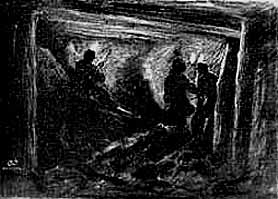 centuries,
radical changes in mining raw materials, manufacturing goods, and transporting
merchandise permanently altered the economic landscape of this nation. While
other world powers struggled to import enough raw materials and merchandise
to compete on the world market; the United States struggled to achieve internal
balance as sectional, political, racial, and economic rifts put a select
class in the position to control industry and wealth, leaving many Americans
to live in poverty. The story of coal and its relationship to migrant African
American labor (in Birmingham and Pittsburgh and elsewhere) is a significant
portion of this chapter in our history. centuries,
radical changes in mining raw materials, manufacturing goods, and transporting
merchandise permanently altered the economic landscape of this nation. While
other world powers struggled to import enough raw materials and merchandise
to compete on the world market; the United States struggled to achieve internal
balance as sectional, political, racial, and economic rifts put a select
class in the position to control industry and wealth, leaving many Americans
to live in poverty. The story of coal and its relationship to migrant African
American labor (in Birmingham and Pittsburgh and elsewhere) is a significant
portion of this chapter in our history. |
In roughly 1850, railroads supplanted canals, steamboats,
stagecoaches and the like as the primary form of transportation in the States.
The rise of the rails took place amidst the American Industrial Revolution;
and was at the same time a cause and a product of this same period of industrialization.
With the rise of mechanized manufacturing in the late eighteenth century,
coal made its appearance on the American industrial scene as a fuel in the
manufacturing engines of 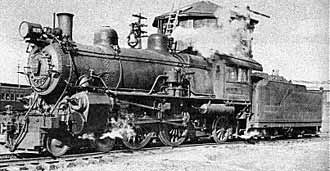 factories.
However, it was not until the 1830's and 1840's that coal started to widely
replace wood and charcoal in manufacturing and iron processing. As new methods
of iron production became more widely used, more coal was required. Coal
hadn't been necessary in older, more traditional methods of iron production,
which used charcoal and waterpower to produce, roll, and puddle iron. The
anthracite coal found through much of the country could not be used to produce
coke, and it was not until the advent and popularization of "hot blast"
refining, which used anthracite coal, that coal would commence to dominate
the industrial scene. factories.
However, it was not until the 1830's and 1840's that coal started to widely
replace wood and charcoal in manufacturing and iron processing. As new methods
of iron production became more widely used, more coal was required. Coal
hadn't been necessary in older, more traditional methods of iron production,
which used charcoal and waterpower to produce, roll, and puddle iron. The
anthracite coal found through much of the country could not be used to produce
coke, and it was not until the advent and popularization of "hot blast"
refining, which used anthracite coal, that coal would commence to dominate
the industrial scene. |
The United States is a country far more spread out than its
European counterparts. In the thick of the Industrial Revolution, there
were still vast distances between many populated areas, traversed only by
frequently impassable roadways and canals. If necessity is the mother of
invention, it is no wonder that in time the United States came to dominate
the invention and refinement of modes of transportation. The expansion of
the railways conspired with the increases in industrialization to form a
national climate in which many people relocated themselves to take advantage
of the increasing  economic
activity elsewhere. One such sector of the population consisted of those
migrant Blacks who sought to take advantage of the coal hungry expansion
by moving from the agricultural base to a life in the mines. Mines had long
existed side by side with agriculturally-based communities in the South.
For example, in Alabama throughout the nineteenth century, the communities
surrounding Birmingham included many farming communities and a number of
mine camps. Within a single family, individuals might on the one hand take
up the responsibility of the family's land and its cultivation, or, on the
other, venture out to seek employment at a local mine. The integration of
these two businesses is not surprising since the products of both labors
are very beneficial even within a single family or community. That is to
say, the later concepts of specialization and separation were not so widespread.
It made sense to run a farm and have one or more sons help in its operation
while other family members went to the mines. However, as the demand for
coal, iron, and steel increased, so did the recruiting efforts of coal companies.
Men were called upon, and found it somewhat lucrative, and certainly exciting,
to leave their land and go out to work in industry or mining. These offers
had a special appeal to Black laborers in the South. economic
activity elsewhere. One such sector of the population consisted of those
migrant Blacks who sought to take advantage of the coal hungry expansion
by moving from the agricultural base to a life in the mines. Mines had long
existed side by side with agriculturally-based communities in the South.
For example, in Alabama throughout the nineteenth century, the communities
surrounding Birmingham included many farming communities and a number of
mine camps. Within a single family, individuals might on the one hand take
up the responsibility of the family's land and its cultivation, or, on the
other, venture out to seek employment at a local mine. The integration of
these two businesses is not surprising since the products of both labors
are very beneficial even within a single family or community. That is to
say, the later concepts of specialization and separation were not so widespread.
It made sense to run a farm and have one or more sons help in its operation
while other family members went to the mines. However, as the demand for
coal, iron, and steel increased, so did the recruiting efforts of coal companies.
Men were called upon, and found it somewhat lucrative, and certainly exciting,
to leave their land and go out to work in industry or mining. These offers
had a special appeal to Black laborers in the South. |
African American laborers worked in the Alabama coal fields
as far back as the turn of the 1800's. At that time, plantation owners,
to varying degrees, designated certain slaves to work the mines on the property
and supply coal for heating to the 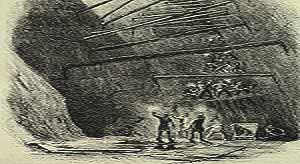 plantation.
Some owners expanded their mines to such a degree that the entire property
came to be primarily profitable through this work in mining. Some slaves
found it possible to purchase their or their family's freedom through this
mine work. After the Civil War, many plantation owners turned to convict
labor to replace the slave labor they had lost. The same new rails which
had so recently transported slaves South were used to move convicts. Some
mines were even constructed with garrisons on the premises to incarcerate
the convicts, many of them unjustly convicted or sentenced so that the state
might pad its coffers with the fruits of the labors of more and more men. plantation.
Some owners expanded their mines to such a degree that the entire property
came to be primarily profitable through this work in mining. Some slaves
found it possible to purchase their or their family's freedom through this
mine work. After the Civil War, many plantation owners turned to convict
labor to replace the slave labor they had lost. The same new rails which
had so recently transported slaves South were used to move convicts. Some
mines were even constructed with garrisons on the premises to incarcerate
the convicts, many of them unjustly convicted or sentenced so that the state
might pad its coffers with the fruits of the labors of more and more men. |
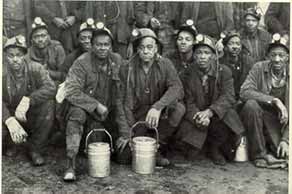 The
coal mines in the South were dominated by African American labor from the
beginning, in fact. Whether or not their labor was extorted forcefully or
no, the presence of African-Americans in the mines of the South was a precedented
occurrence. Coal mines were set up in the South as communities centered
around the mine. Company housing was available, and dominated at times,
but it was not necessarily mandatory. The communities were segregated and
the mines were as well at times. The wages varied for both the position
and the race of the worker. Although the black miner in the South found
that his presence was often tolerated and always downtrodden the conditions
of his life in the North were often as poor, although in a distinctly different
way. The
coal mines in the South were dominated by African American labor from the
beginning, in fact. Whether or not their labor was extorted forcefully or
no, the presence of African-Americans in the mines of the South was a precedented
occurrence. Coal mines were set up in the South as communities centered
around the mine. Company housing was available, and dominated at times,
but it was not necessarily mandatory. The communities were segregated and
the mines were as well at times. The wages varied for both the position
and the race of the worker. Although the black miner in the South found
that his presence was often tolerated and always downtrodden the conditions
of his life in the North were often as poor, although in a distinctly different
way. |
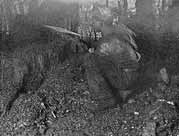 Working
conditions in coal mines were universally poor. Mines were usually of the
drift or shaft description, which meant Working
conditions in coal mines were universally poor. Mines were usually of the
drift or shaft description, which meant 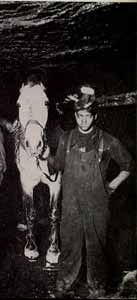 that men worked
for prolonged periods of time far beneath the earth's surface. The average
American coal mine begins 190 feet below the ground and during these times,
at the turn of the 20th century, to work at these depths was very dangerous.
The initial plunge into the mine was taken in either an elevator or a cart
(down an inclined tunnel). Work was done in "rooms" of coal which
were comprised of opened-out spaces in the seams of the coal, supported
by pillars of coal which were left remaining. A miner worked with a helper,
blasting, chiseling, shoveling, and loading the coal. Pay was commonly around
three dollars a day for a white man, and between one and two dollars for
his helper, depending on the amount mined. Water lay stagnant at the lowest
points of the mine and had to be continually pumped out. The air quality
was of the worst sort, with soot, dust, and poison gas all about. The carts
were moved, in the beginning, by donkeys, and in time, by machine. Blacks
occupied the worst positions in the mines often held to lower level jobs
with high risk, especially in the South. In the North the bosses were most
concerned about production rather than traditional prejudice; but with this
outlook came another sort of danger. that men worked
for prolonged periods of time far beneath the earth's surface. The average
American coal mine begins 190 feet below the ground and during these times,
at the turn of the 20th century, to work at these depths was very dangerous.
The initial plunge into the mine was taken in either an elevator or a cart
(down an inclined tunnel). Work was done in "rooms" of coal which
were comprised of opened-out spaces in the seams of the coal, supported
by pillars of coal which were left remaining. A miner worked with a helper,
blasting, chiseling, shoveling, and loading the coal. Pay was commonly around
three dollars a day for a white man, and between one and two dollars for
his helper, depending on the amount mined. Water lay stagnant at the lowest
points of the mine and had to be continually pumped out. The air quality
was of the worst sort, with soot, dust, and poison gas all about. The carts
were moved, in the beginning, by donkeys, and in time, by machine. Blacks
occupied the worst positions in the mines often held to lower level jobs
with high risk, especially in the South. In the North the bosses were most
concerned about production rather than traditional prejudice; but with this
outlook came another sort of danger. |
Life in the coal camps of the North was very isolated. Often
the coal seam was in an extremely isolated locale and thus the mine was
the only reason for the community's existence. Although at times this lent
itself to an agreeable small town atmosphere, it could also lead to contention.
In these little company towns often three generations of a family were all
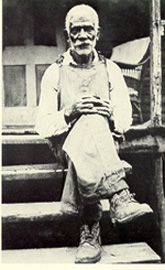 employed
simultaneously in the same mine. The boys in the town might work in a mine
from the age of eleven on up, and sometime even younger. Local mine baseball
teams and women's clubs sprung up to provide social outlets. Schools were
sometimes formed, very often desegregated, though not always. With so many
different manners of people flooding to the rapidly industrializing North,
the labor managers in the mines had to deal with many different groups of
people. The signs were often posted in a dozen languages in some Western
Pennsylvanian and West Virginian camps. But while the mines themselves were
often desegregated and the different peoples worked side by side, often
in times of labor conflict, the bosses played the different groups off of
each other. This worked against many groups but especially African Americans.
African Americans were attracted and transported to northern mines to begin
working legitimately in them, but as time went on - and the labor struggle
gained momentum - frequently they were used specifically to break strikes.
Black workers became associated in the minds of white workers as "scabs."
While the unions excluded black membership and the black population at large
was in dire need of reasonable employment, this dangerous (and often lethal)
situation of black strikebreakers being imported into mines would occur
again and again. employed
simultaneously in the same mine. The boys in the town might work in a mine
from the age of eleven on up, and sometime even younger. Local mine baseball
teams and women's clubs sprung up to provide social outlets. Schools were
sometimes formed, very often desegregated, though not always. With so many
different manners of people flooding to the rapidly industrializing North,
the labor managers in the mines had to deal with many different groups of
people. The signs were often posted in a dozen languages in some Western
Pennsylvanian and West Virginian camps. But while the mines themselves were
often desegregated and the different peoples worked side by side, often
in times of labor conflict, the bosses played the different groups off of
each other. This worked against many groups but especially African Americans.
African Americans were attracted and transported to northern mines to begin
working legitimately in them, but as time went on - and the labor struggle
gained momentum - frequently they were used specifically to break strikes.
Black workers became associated in the minds of white workers as "scabs."
While the unions excluded black membership and the black population at large
was in dire need of reasonable employment, this dangerous (and often lethal)
situation of black strikebreakers being imported into mines would occur
again and again. |
| Coal consumption is still very high. Much of our electricity and all of our steel is produced using coal. However,
the technological advances in the industry have resulted in many mines being mechanized and the miners being out
of work. Other mines ceased to be profitable and were shut down. Many of the principles which applied to the downfall
of coal were repeated in the history of the steel industry. |
|

|

|
NEXT
|
 centuries,
radical changes in mining raw materials, manufacturing goods, and transporting
merchandise permanently altered the economic landscape of this nation. While
other world powers struggled to import enough raw materials and merchandise
to compete on the world market; the United States struggled to achieve internal
balance as sectional, political, racial, and economic rifts put a select
class in the position to control industry and wealth, leaving many Americans
to live in poverty. The story of coal and its relationship to migrant African
American labor (in Birmingham and Pittsburgh and elsewhere) is a significant
portion of this chapter in our history.
centuries,
radical changes in mining raw materials, manufacturing goods, and transporting
merchandise permanently altered the economic landscape of this nation. While
other world powers struggled to import enough raw materials and merchandise
to compete on the world market; the United States struggled to achieve internal
balance as sectional, political, racial, and economic rifts put a select
class in the position to control industry and wealth, leaving many Americans
to live in poverty. The story of coal and its relationship to migrant African
American labor (in Birmingham and Pittsburgh and elsewhere) is a significant
portion of this chapter in our history. economic
activity elsewhere. One such sector of the population consisted of those
migrant Blacks who sought to take advantage of the coal hungry expansion
by moving from the agricultural base to a life in the mines. Mines had long
existed side by side with agriculturally-based communities in the South.
For example, in Alabama throughout the nineteenth century, the communities
surrounding Birmingham included many farming communities and a number of
mine camps. Within a single family, individuals might on the one hand take
up the responsibility of the family's land and its cultivation, or, on the
other, venture out to seek employment at a local mine. The integration of
these two businesses is not surprising since the products of both labors
are very beneficial even within a single family or community. That is to
say, the later concepts of specialization and separation were not so widespread.
It made sense to run a farm and have one or more sons help in its operation
while other family members went to the mines. However, as the demand for
coal, iron, and steel increased, so did the recruiting efforts of coal companies.
Men were called upon, and found it somewhat lucrative, and certainly exciting,
to leave their land and go out to work in industry or mining. These offers
had a special appeal to Black laborers in the South.
economic
activity elsewhere. One such sector of the population consisted of those
migrant Blacks who sought to take advantage of the coal hungry expansion
by moving from the agricultural base to a life in the mines. Mines had long
existed side by side with agriculturally-based communities in the South.
For example, in Alabama throughout the nineteenth century, the communities
surrounding Birmingham included many farming communities and a number of
mine camps. Within a single family, individuals might on the one hand take
up the responsibility of the family's land and its cultivation, or, on the
other, venture out to seek employment at a local mine. The integration of
these two businesses is not surprising since the products of both labors
are very beneficial even within a single family or community. That is to
say, the later concepts of specialization and separation were not so widespread.
It made sense to run a farm and have one or more sons help in its operation
while other family members went to the mines. However, as the demand for
coal, iron, and steel increased, so did the recruiting efforts of coal companies.
Men were called upon, and found it somewhat lucrative, and certainly exciting,
to leave their land and go out to work in industry or mining. These offers
had a special appeal to Black laborers in the South. Working
conditions in coal mines were universally poor. Mines were usually of the
drift or shaft description, which meant
Working
conditions in coal mines were universally poor. Mines were usually of the
drift or shaft description, which meant 